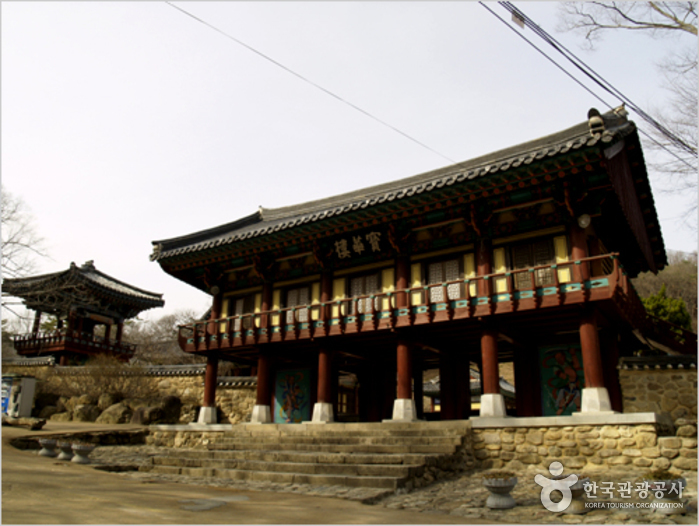About Eunhaesa Temple
Welcome to Eunhaesa Temple, a historic and picturesque destination nestled on the scenic Palgongsan Mountain in Yeongcheon city, Gyeongsangbuk-do. As one of the two major temples on the mountain, alongside Donghwasa Temple, Eunhaesa Temple offers visitors a unique insight into the rich history and cultural heritage of South Korea.
Ancient Origins and Significance
Eunhaesa Temple has a fascinating past that dates back to the Silla Kingdom in AD 809. Originally founded by Monk Hyecheol, the temple was initially known as Haeansa Temple. However, during the Joseon dynasty in 1546, it was relocated to its current site and renamed Eunhaesa Temple. This move was accompanied by the construction of a lecture hall dedicated to King Injong, where a memorial stone plaque was placed to honor the king’s umbilical cord.
Architecture and Treasures
Eunhaesa Temple is home to several impressive structures and treasures. The temple complex encompasses the main shrine, Bohwaru pavilion, Seolseondan Hall, and Shimgeondang Hall. Additionally, there are eight small hermitages, Baegeungam Temple, Jungangam Temple, and the renowned Eunhaesa Buddhist University, a prominent Buddhist education institution.
Among the temple’s most notable treasures are the Geojoamyongsanjeon Hall, recognized as a National Treasure, and the Baekheungamgeukrakjeon Hall, considered a Treasure. Visitors will also find the Sunidan Buddha Platform, the Wunbuamcheongdongbosal Seated Buddha Statue, and the Eunhaesa Temple Gwaebultaeng hanging Buddha picture, all of which are designated as Treasures.
Exploring the Surroundings
While visiting Eunhaesa Temple, don’t miss the opportunity to explore the enchanting surroundings. Just a stone’s throw away, you’ll find the Seongbu Museum, which showcases cultural assets from Eunhaesa Temple and the neighboring areas. Additionally, there are several popular tourist attractions nearby, including the Geukrakgul grotto of Jungangam Temple (also known as Hwaeomgul Grotto), the majestic Geondeul Rock, the ancient Manyeonsong Pine Tree, the tranquil Ganggunsu Waters, and the breathtaking Anheungpokpo Falls of Gigiam Temple.
Whether you’re interested in history, culture, or simply seeking a peaceful retreat in the heart of nature, Eunhaesa Temple and its surroundings offer a captivating experience that will leave a lasting impression. Come and immerse yourself in the beauty and serenity of this historic Korean destination.

